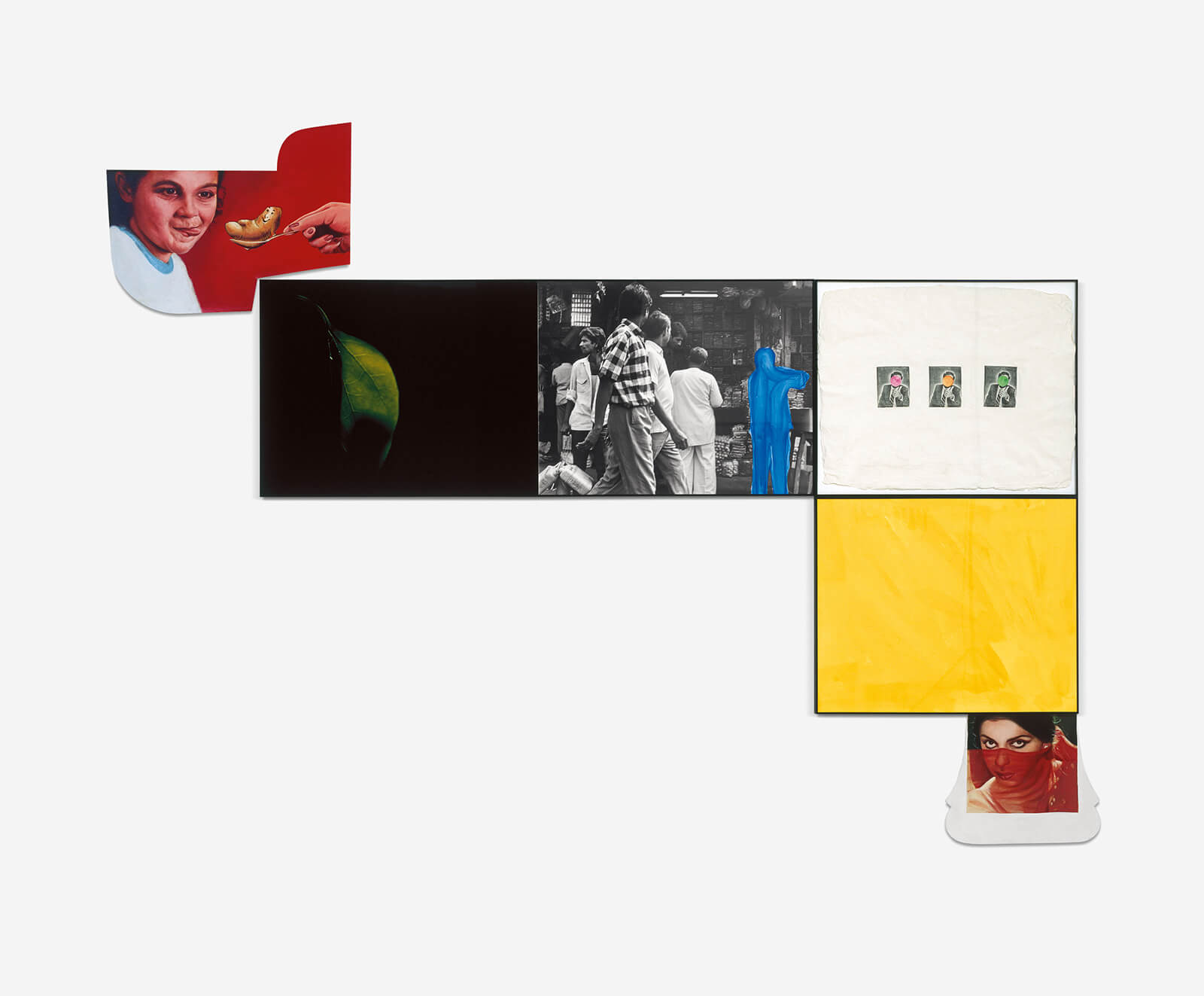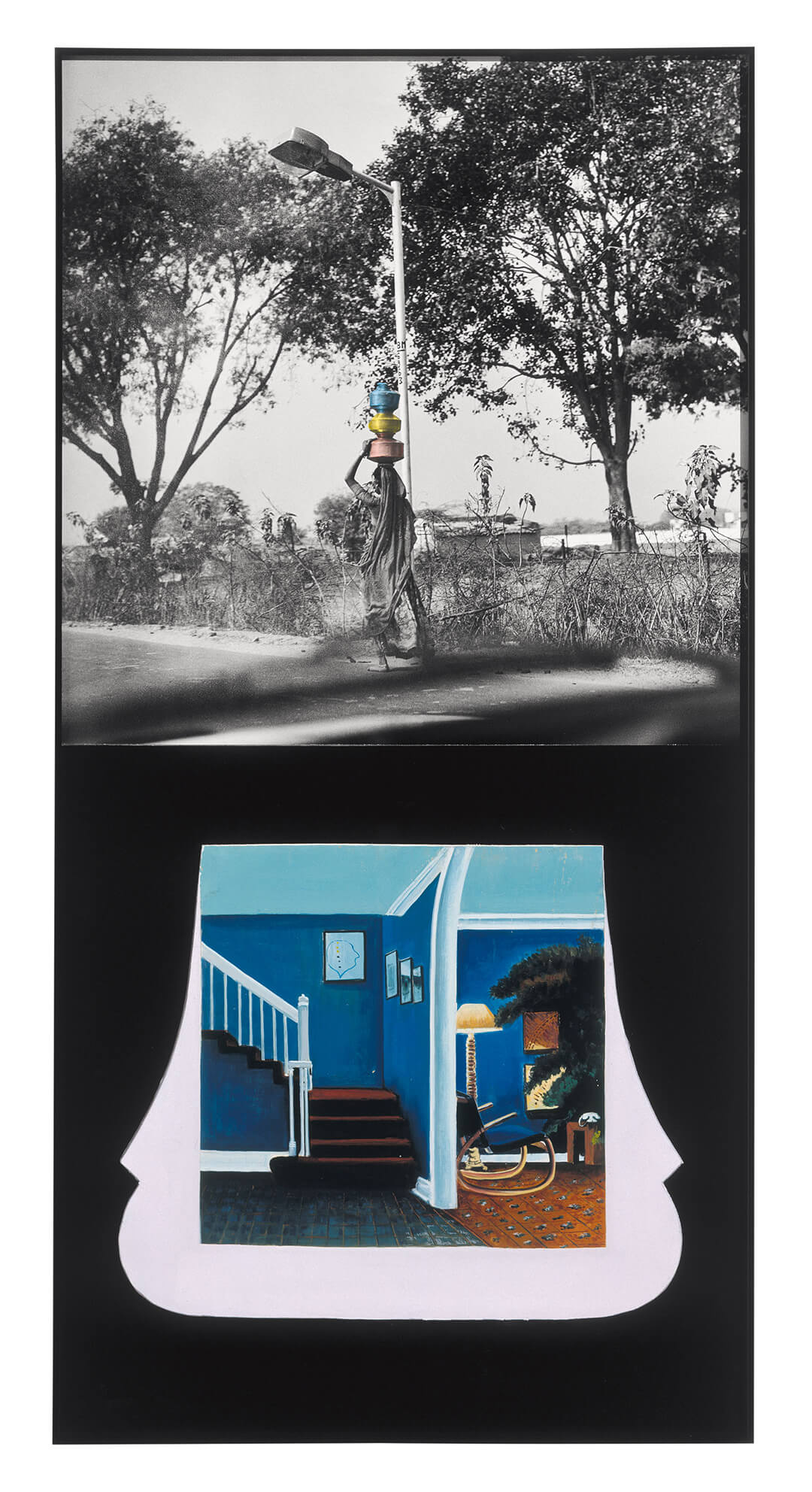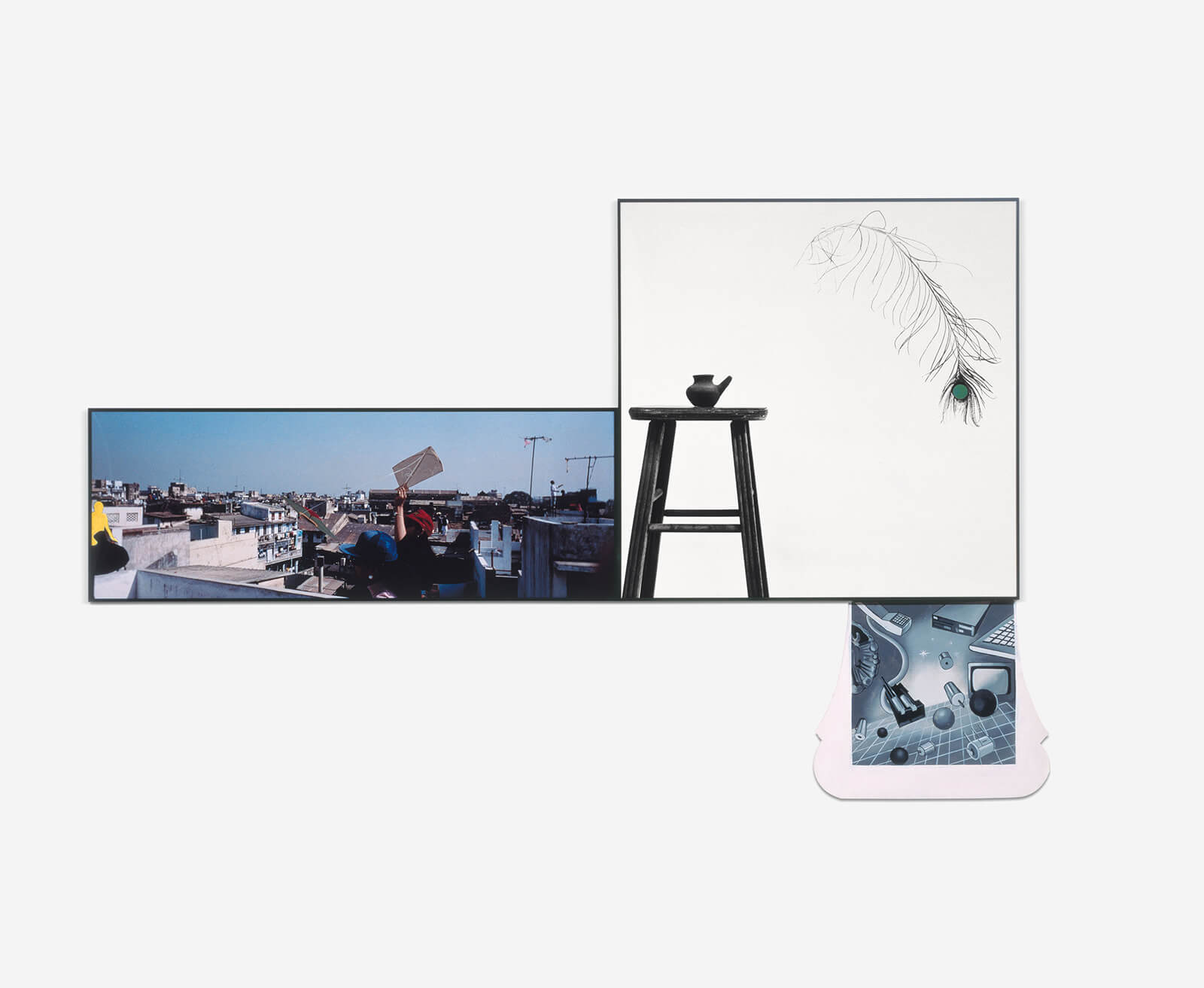In early 1992, John Baldessari, a pioneer of American conceptualism, embarked on a transformative journey to Ahmedabad in western India at the invitation of the Sarabhai family. Renowned for their century-old textile company and deep cultural engagement, the Sarabhais had turned their 22-acre residence, designed by Le Corbusier in 1951, into a hub for artistic and intellectual exchange since the 1940s. Formally established as a residency in 1975 by Anand Sarabhai, a molecular biologist and grandson of the company’s founder, the Sarabhai residency mirrored the influential residencies organised by the John D. Rockefeller III Foundation in New York. Sprüth Magers’ new exhibition, Ahmedabad 1992, showcases the assemblages Baldessari created during his one-month artist residency. These works offer a glimpse into his brief yet impactful interaction with Ahmedabad. Notably, a select few pieces were gifted to the Sarabhais as part of the cultural exchange and remain on the walls of their historic residence to this day.
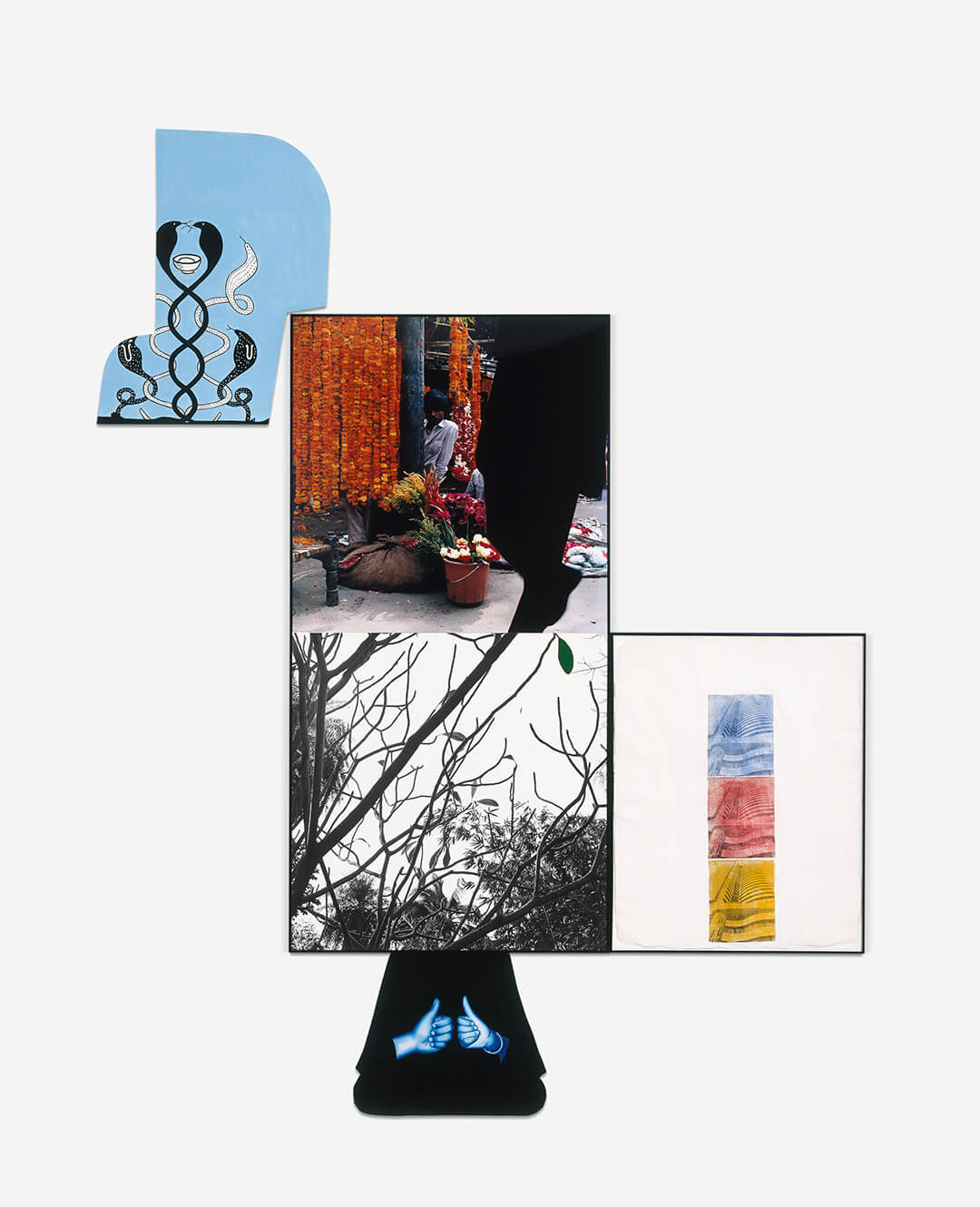
The first work in the exhibition is Flower Shop/and Branch (with Green Intrusion), 1992, made from one black-and-white photograph, one colour photograph, and a photocopy on handmade paper with acrylic wash and oil enamel paint on Masonite. Most works in this exhibition use a similar collection of mediums. Known for his photography, using black-and-white and colour photographs was not unusual for Baldessari. However, his work in California in the 1990s generally included photographs he commissioned. In India, he began capturing snapshots of his own experiences and incorporating them into his art. Perhaps it was the hustle and bustle of the city that jolted him into action – but once he returned to the United States, Baldessari rarely included his photography in his art again.
In Flower Shop/and Branch (with Green Intrusion), the top image at the centre of the collage is of a flower seller with garlands of marigold flowers. Traditionally used for festive occasions, the image captures India’s vibrance and also perhaps reflects Baldessari’s excitement about the opportunity to travel and create in the country. Inspired by Ahmedabad’s strong textile history and the Sarabhai paper mill, Baldessari also experimented with handmade paper. In this piece, on the handmade paper is an image of a building in three colours, stacked on top of each other to symbolise the growing industrialisation in India in the late 1990s and early 2000s. Flower Shop is a physical manifestation of the new ideas and ways of life that Baldessari was introduced to in Ahmedabad.
Inspired by Ahmedabad’s strong textile history and the Sarabhai paper mill, Baldessari also experimented with handmade paper.
In the early 1990s, when Baldessari was invited to the Ahmedabad residency, his work focused primarily on creating collages of commissioned photographs. This included images he found in newspapers, magazines, television, and films. He also relied heavily on Sunday painters and local artists to recreate images, which he assembled into various layouts, creating a visual network of images and placing tiny colourful dots on them. On the second floor of Sprüth Magers, a vitrine of photographs showcases the different layouts Baldessari experimented with before finalising each piece. It also includes his notes on the designs, elements he crossed out, and changes he made to photographs he took in India to achieve his desired image.
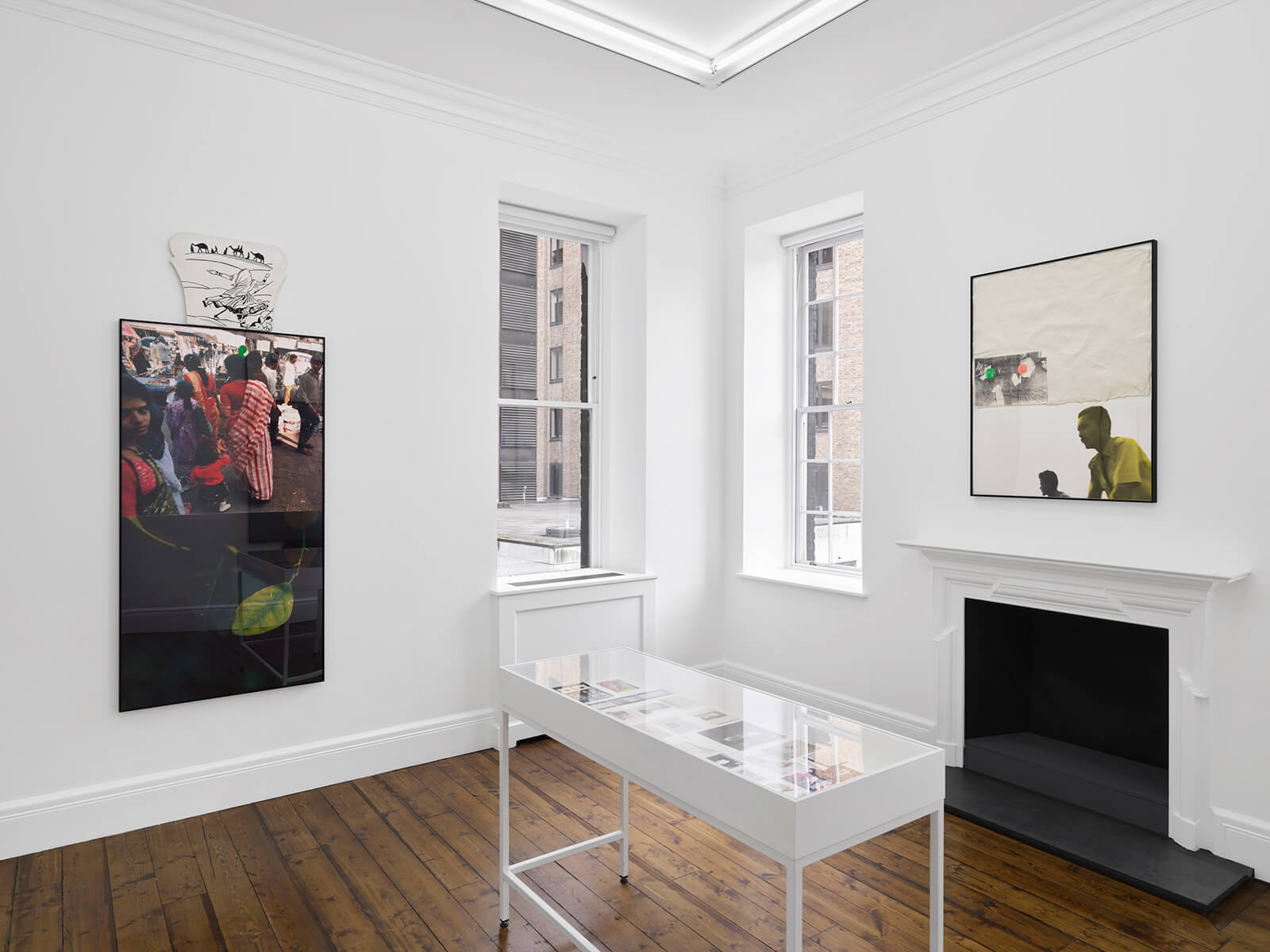
Baldessari’s work reflects the influence of Dadaism, rejecting traditional aesthetics in favour of collaging disparate curiosities. In this collection, he uses political images, such as in Pillar (Blue)/Two Leaves (Red), 1992, a mixed media piece with a photocopy of India’s then Finance Minister, Dr. Manmohan Singh at the Sardar Patel Institute in 1991. Baldessari covers the centre of Singh’s face with a small blue dot, making him more recognisable than the two men beside him. This image, juxtaposed with a futuristic metro scene in Ahmedabad painted on a mudflap and a saturated picture of red leaves, typifies Dadaism’s randomness and offers insight into Baldessari’s mind, emphasising process over product.
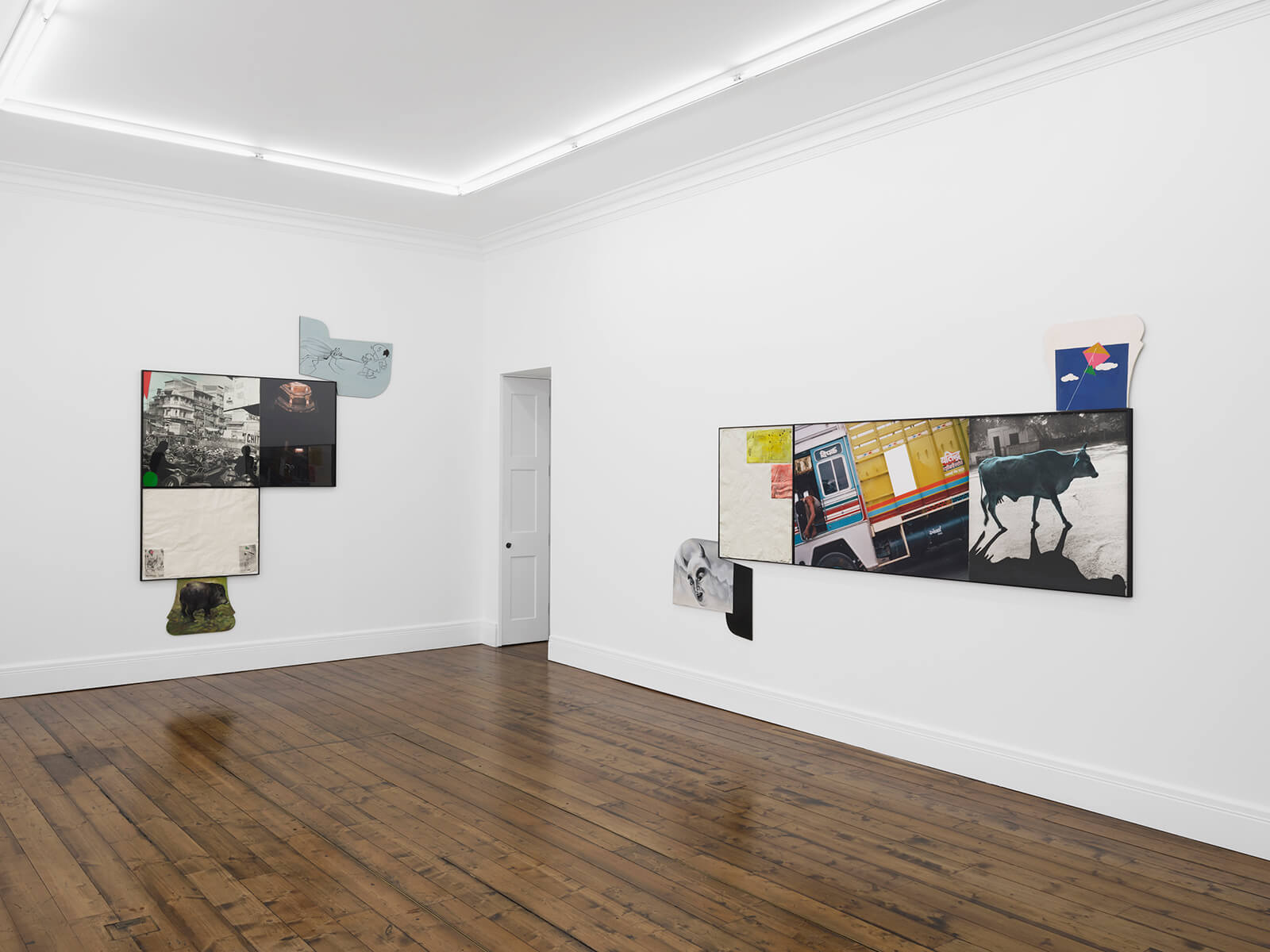
With over a thousand works of art and two hundred solo exhibitions in the US and Europe, Baldessari has influenced artists like Barbara Kruger, Cindy Sherman, and David Salle. Elements of his later work were inspired by his time in India. Baldessari was particularly fascinated by the curved mudflaps on motorcycles and autos adorned with words, advertisements, movie posters, or cartoon characters. In this exhibition, each artwork includes a mudflap made by unknown artists commissioned by Baldessari in Ahmedabad and shipped to the US. While he does not include mudflaps in his later work, he does begin to cut works into unique shapes which appear to reflect his residency and the indelible mark it left on his work. Notably, despite his travels, Baldessari did not create another series similar to the works in Ahmedabad, making them crucial to understanding his artistic oeuvre.




